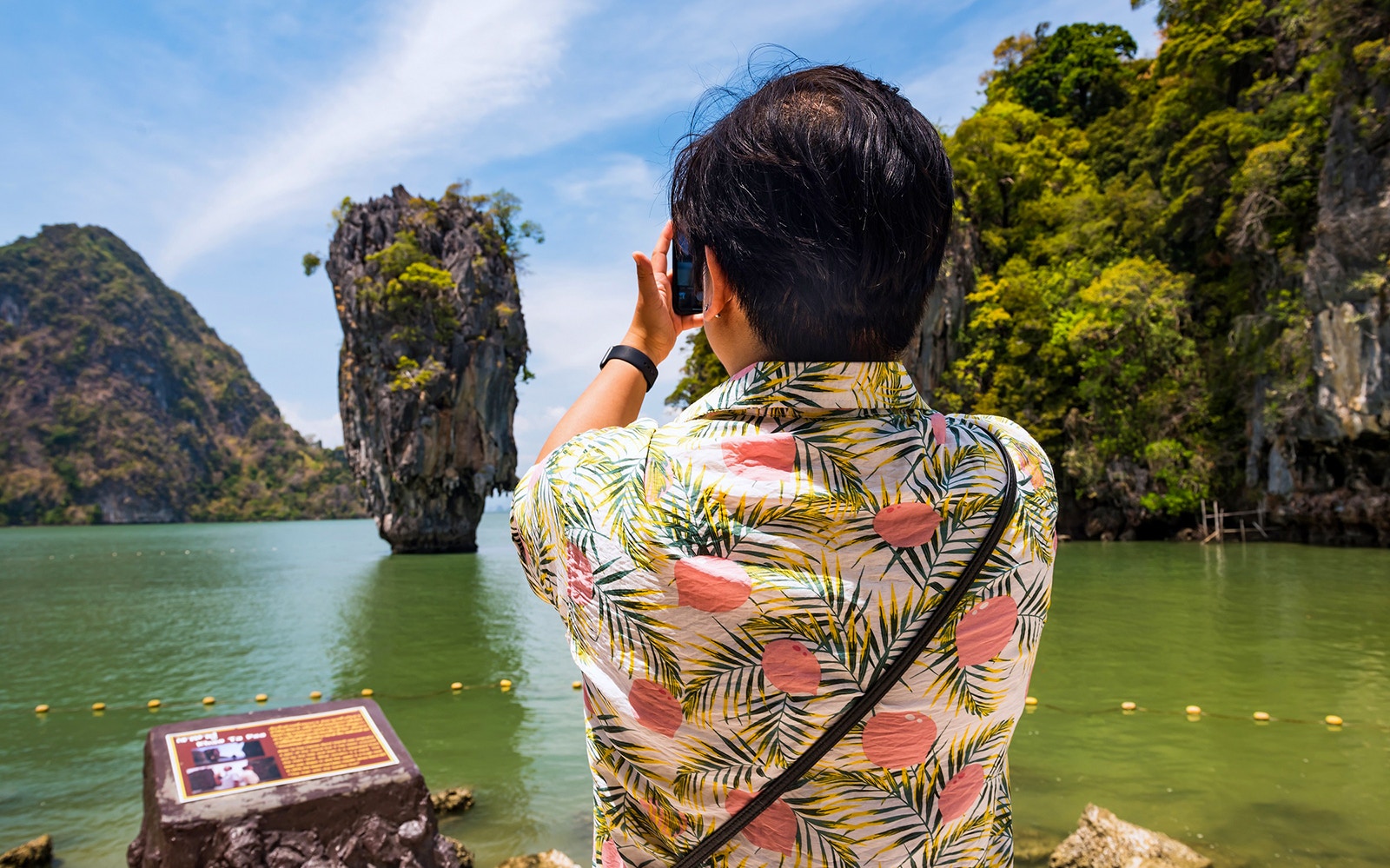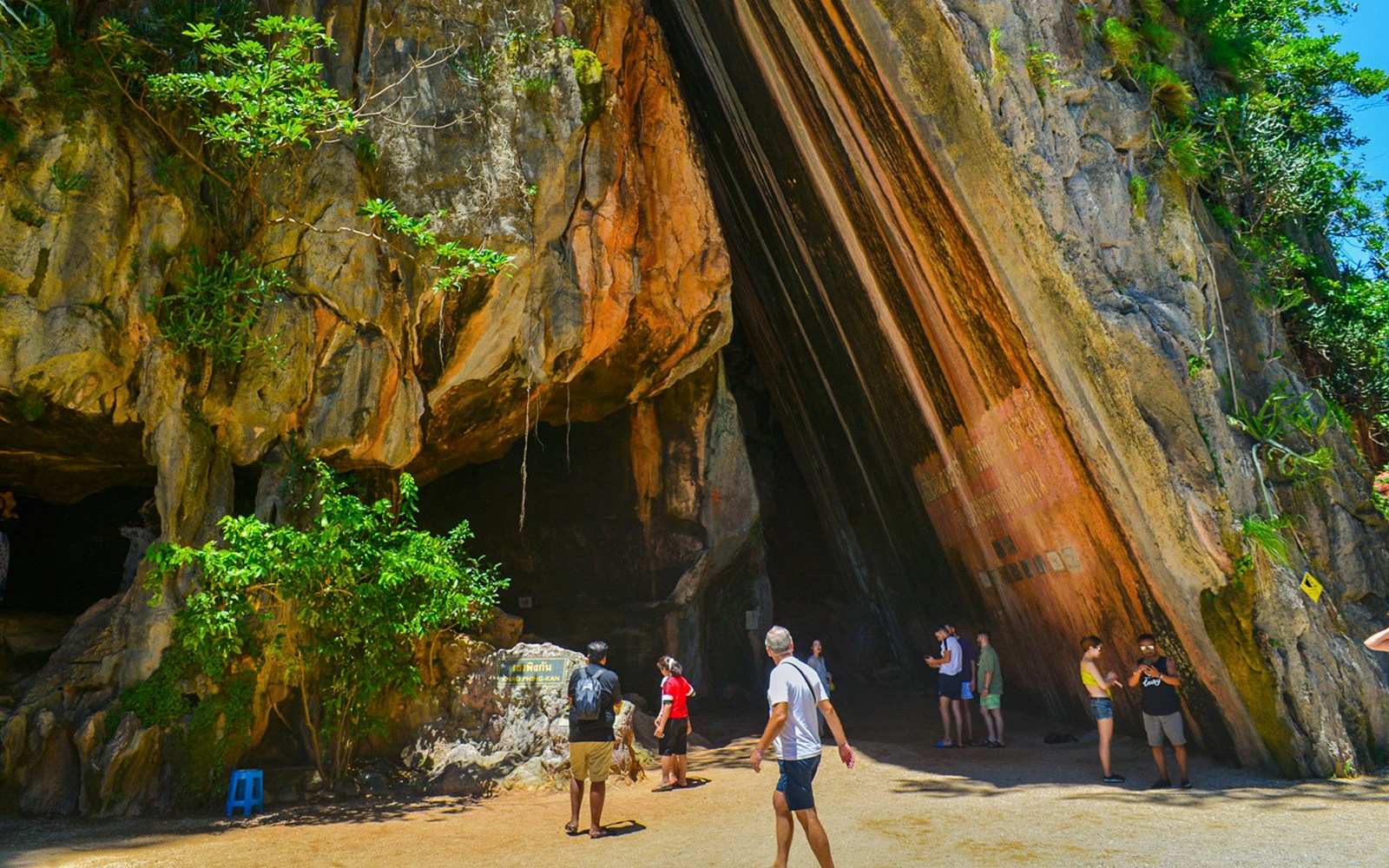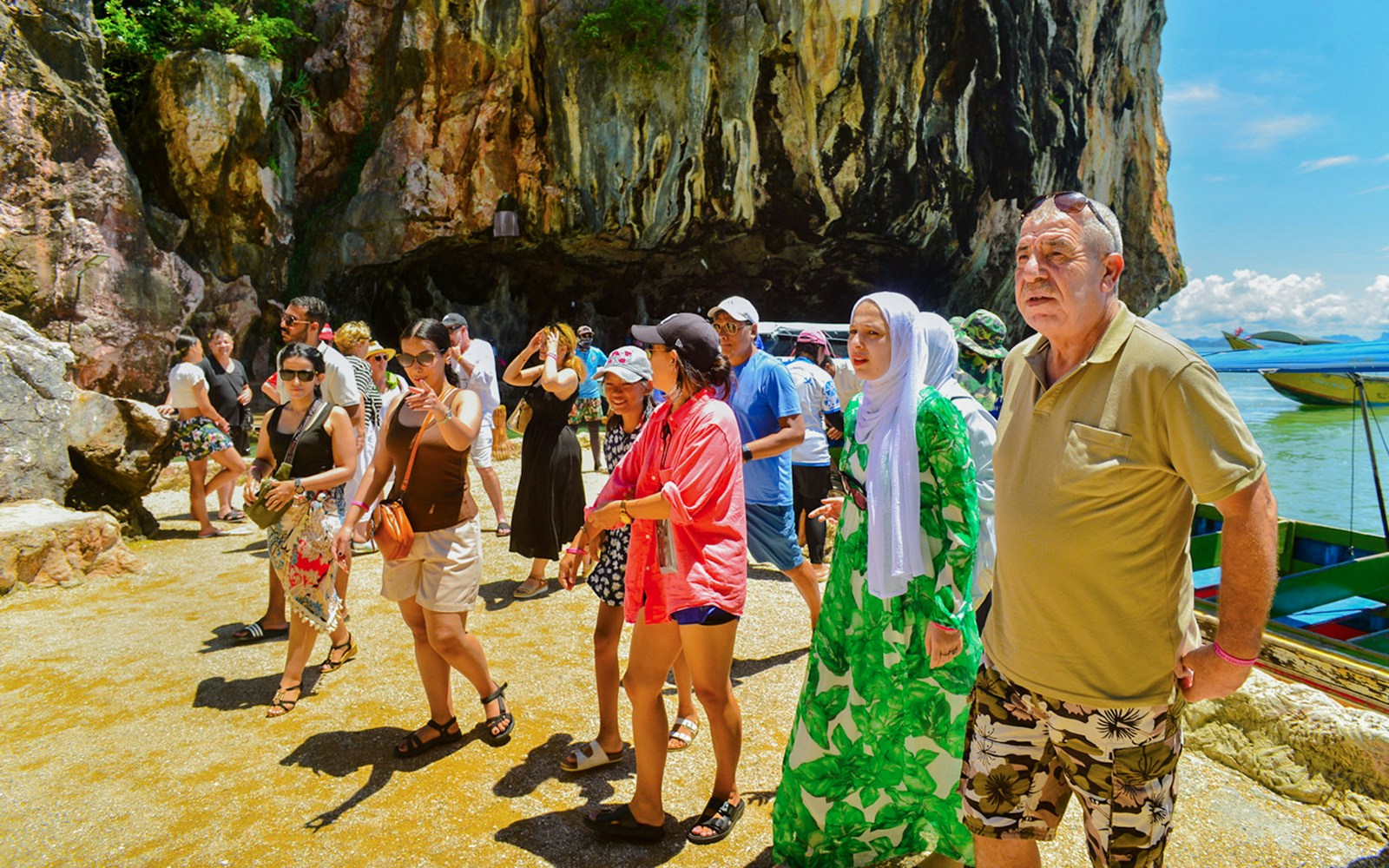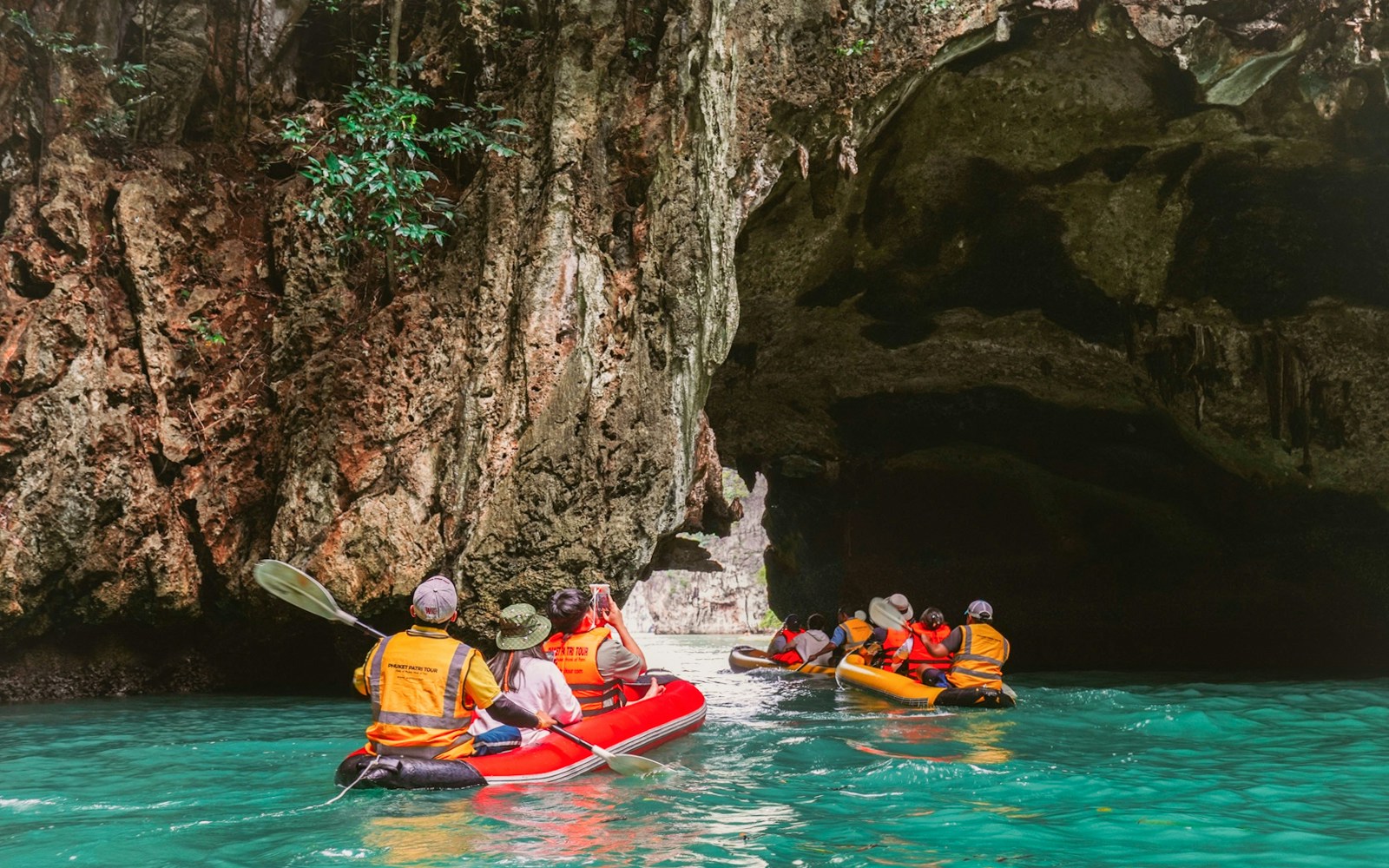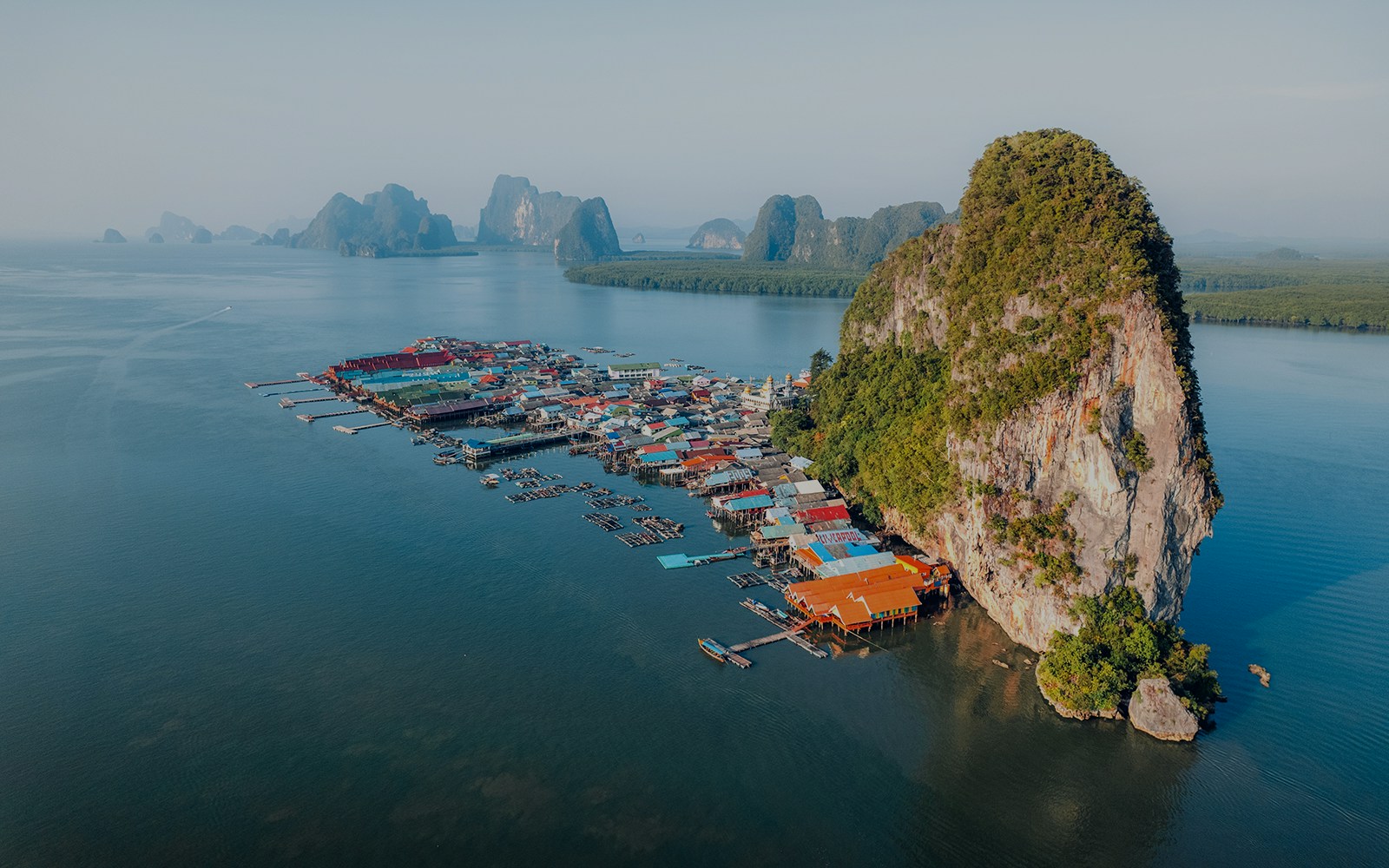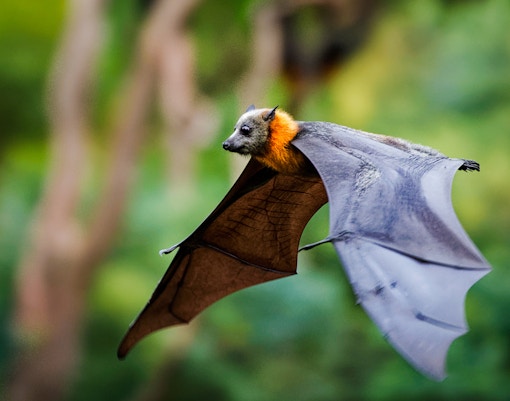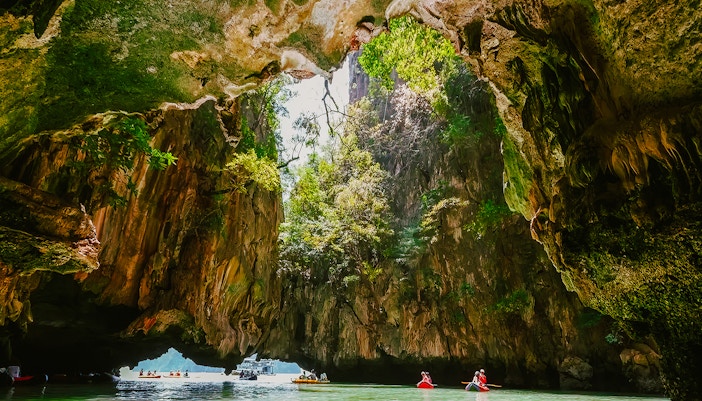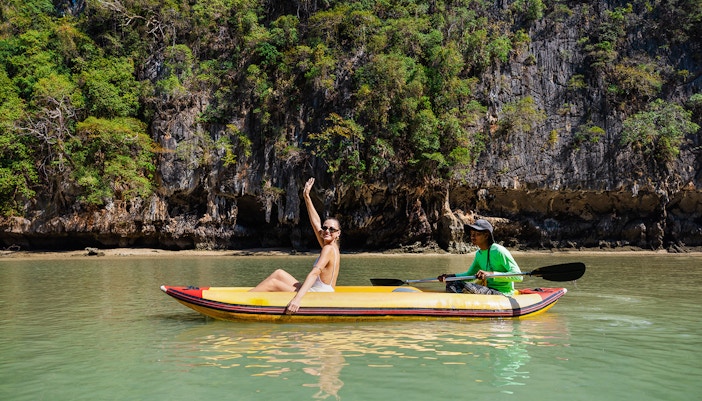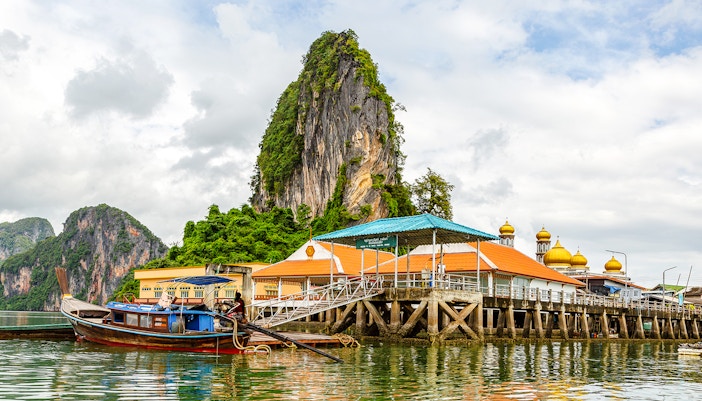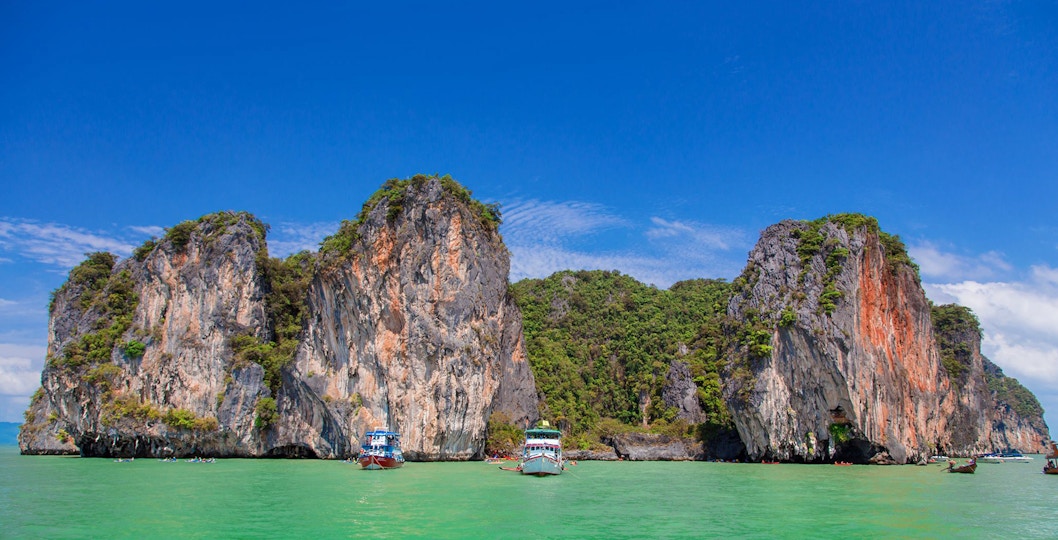Khao Phing Kan, with the iconic limestone islet Ko Ta Pu just offshore.
Key areas of James Bond Island
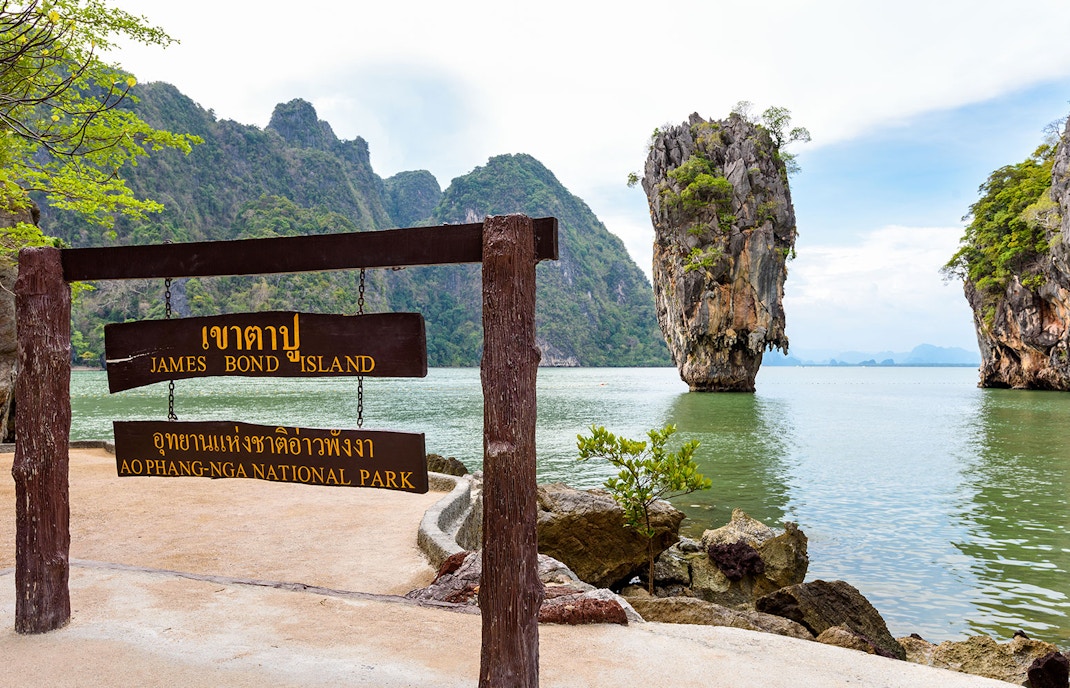
Khao Phing Kan
The main island of James Bond Island, Khao Phing Kan, is where most visitors land. Its name means “hills leaning against each other,” referring to the limestone cliffs that slope toward the sea. Once ashore, you’ll find:
- Walking trails & viewpoints: Shaded paths connect both sides, opening to beaches and rocky ledges with bay views.
- Caves & rock formations: Small caves and rugged cliffs highlight the island’s geology.
- Beachfront views: The sandy shore offers the best angle to photograph Ko Ta Pu.
- Local market stalls: Vendors near the dock sell souvenirs and refreshments.

Ko Ta Pu
Just offshore from Khao Phing Kan stands Ko Ta Pu, a 20m limestone spire and the most iconic sight in Phang Nga Bay. Its name means 'crab’s eye island', though it’s better known as the James Bond Rock.
- Cinematic fame: Featured in The Man with the Golden Gun (1974), it became a global icon.
- Striking shape: Narrow at the base and wider at the top, formed by centuries of tidal erosion.
- Viewing only: Boats can’t dock here. Photos are taken from the beaches of Khao Phing Kan.
